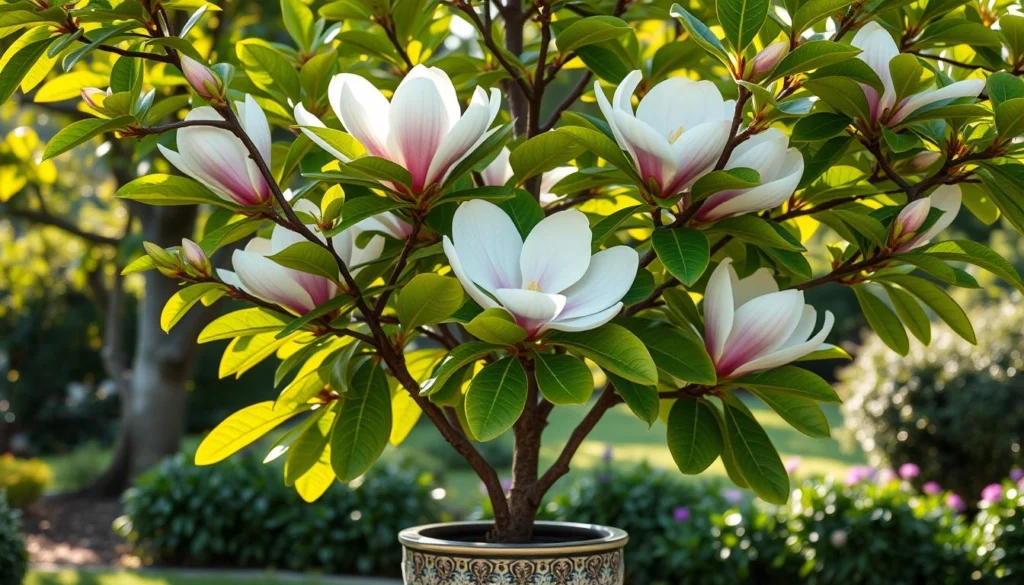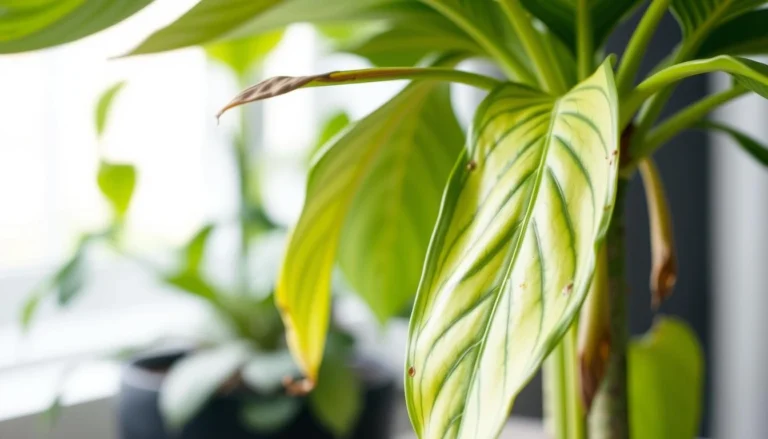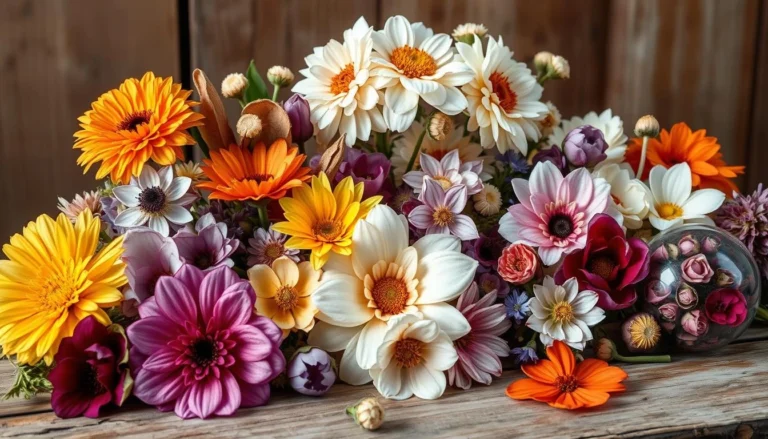10 Expert Tips and Tricks for Thriving Magnolia Trees That You’ve Never Heard Before!”
Magnolia trees are loved for their shiny leaves and beautiful, fragrant flowers. They add beauty to any garden or landscape. But, their tall heights can be a problem for those with small backyards.
Don’t worry, garden lovers and city dwellers. This article will share 10 expert tips and tricks. They will help you grow thriving magnolia trees, even in small spaces.
Key Takeaways:
- Discover compact magnolia cultivars suitable for container gardening
- Learn the ideal container size and placement for potted magnolias
- Uncover the secret to retaining soil moisture and providing optimal sunlight
- Master the art of fertilizing and pruning for continued growth and flowering
- Overcome common challenges and thrive with your magnolia tree in any setting
Choose Compact Cultivars for Container Gardening
When growing magnolia trees in containers, pick compact cultivars that do well in small spaces. Most magnolias can grow up to 80 feet tall, which is too big for small gardens1. Luckily, there are dwarf magnolias that fit perfectly in containers, growing 12 to 20 feet tall and 8 to 12 feet wide1.
Opt for smaller magnolia varieties like ‘Little Gem’ for container growing in suitable climates.
The ‘Little Gem’ magnolia is great for containers, growing 15 to 20 feet tall and 8 to 10 feet wide1. Other small magnolias like Magnolia liliiflora ‘Nigra’ and Magnolia laevifolia ‘Gail’s Favorite’ are also good for pots. They depend on your local climate and USDA Hardiness Zone2.
Explore other dwarf cultivars suitable for pots, such as Magnolia liliiflora ‘Nigra’ and Magnolia laevifolia ‘Gail’s Favorite’.
Magnolia liliiflora ‘Nigra’, or the ‘Purple Lily Magnolia,’ grows 10 to 12 feet tall and wide, perfect for containers1. Magnolia laevifolia ‘Gail’s Favorite’ also does well in pots, reaching 8 to 10 feet in height and width1. These small magnolias add Southern charm to your outdoor spaces.
When picking magnolias for containers, think about your local climate, USDA Hardiness Zone, and the plant’s size and growth. By choosing the right compact varieties, you can enjoy magnolia blooms in small spaces12.
Select the Right Container and Location
When growing magnolia trees3 in containers, picking the right pot is key. The container should be bigger than the tree’s current home, both in depth and width. This allows the tree’s roots to grow freely3. It also needs drainage holes to prevent waterlogged roots3.
Think about where you’ll put the container before you plant. Consider sunlight, frost, wind, and how it will look in the space3. Big containers are heavy, so placing them first is easier3.
Choose a Spacious Container with Drainage Holes
For your magnolia tree, pick a container that’s bigger than its current home. This gives the roots room to grow3. Make sure it has holes in the bottom for water to drain out. This stops root rot and other problems3.
Consider Sunlight and Aesthetics When Placing the Container
Before planting, find the best spot for your container. Think about sunlight, frost, and wind to help your tree grow well3. Also, consider how the container will look with the surroundings3.
“Choosing the right container and placement is crucial for the long-term success of your magnolia tree in a container garden.”
Elevate Your Containers for Better Drainage
When growing magnolia trees in containers, good drainage is key. Raising your plant containers a bit off the ground helps a lot. This way, extra water can drain away, keeping the pot and its surface dry4.
To do this, use pot feet or place bricks under the containers. Pot feet are small platforms that lift the pot just right. They let water flow freely and stop waterlogging4. Bricks are also great, offering a strong and cheap way to lift your magnolia pots. This simple trick can really help your magnolia trees in pots stay healthy and live longer5.
Big, heavy pots that won’t be moved much after planting benefit most from this trick. Elevating them stops water from pooling and causing root rot or other problems. This is very important in wet areas or when you might water too much4.
Don’t forget, good drainage is vital for growing magnolia trees in containers. Using pot feet or bricks to lift your pots is a smart and easy way to make sure your magnolias do well, even in small spaces54.
Enrich Your Potting Mix with Compost
To give your containerized magnolia the best start, use top-notch potting soil and add compost. Magnolias love rich, slightly acidic soil that holds moisture but also drains well to avoid root rot6. Compost, whether homemade or bought, adds nutrients and microorganisms that boost root growth and plant health6. This mix of nutrient-rich soil and compost is perfect for magnolias to grow well in containers.
Crafting the Perfect Potting Mix
Begin with an all-purpose potting soil as your base for a custom mix. Add perlite, coarse sand, or pine bark to improve aeration and drainage6. Also, mix in compost or worm castings for vital nutrients for your magnolia’s growth6. This mix will give your containerized magnolia the best soil for thriving.
When choosing a commercial potting mix, look for one that’s lightweight for better air. It should have limestone and perlite for pH balance and drainage. Make sure it’s made for magnolias, not just any plant6. The right soil mix is key for your magnolia’s health, whether in a container or in the ground.
“The right soil mix is crucial for the health and longevity of your magnolia tree, whether grown in a container or in the ground.” – Horticulture Specialist, Jane Doe

Adding compost and picking the right potting mix are key for your containerized magnolia’s success. With the perfect soil, your plant will thrive, bringing beauty and lush foliage for years.
Magnolia Trees: Sunlight Requirements
When growing magnolia trees in containers, the right sunlight is key. They love full sun, needing at least six hours of direct sunlight daily7. But, some types like the saucer magnolia can handle partial shade, especially in warm places where too much sun can burn the leaves8.
It’s vital to know the sunlight the magnolia got at the nursery. This helps you understand its needs. If it shows signs of stress, like scorched leaves or no new growth, you might need to adjust its spot7. By watching how it reacts to sunlight, you can make sure your magnolia in a container does well and blooms beautifully9.
| Magnolia Variety | Sunlight Preference | USDA Hardiness Zones |
|---|---|---|
| Southern Magnolia (Magnolia grandiflora) | Full sun | 7-10 |
| Saucer Magnolia (Magnolia x soulangeana) | Full sun to partial shade | 5-9 |
| Star Magnolia (Magnolia stellata) | Full sun to partial shade | 3-10 |
| Yellow Magnolia (Magnolia acuminata) | Full sun | 5-9 |
Knowing the sunlight needs of different magnolias helps gardeners pick the best for their containers8. With the right sunlight and care, your magnolias will bloom beautifully9.
Water Wisely for Consistent Moisture
Keeping the soil moist is key for magnolia trees in containers to grow well. These trees in pots need more water than those planted in the ground because their soil can dry out faster10. Start by watering them 2-3 times a week, especially when they’re new and their roots are still growing. Once they’re settled, you can water them about once a week, depending on the weather10.
It’s important to avoid both too little and too much water. Both can harm the tree10. Check the soil often and water when it starts to dry. Make sure the tree never stays too wet or too dry for too long10. Keeping the moisture level steady is crucial for your magnolia tree’s health and growth in a container10.
Preventing Drought and Overwatering
To keep the soil moist, follow these tips:
- Check the soil regularly by sticking your finger into the potting mix to assess its moisture level.
- Water deeply, ensuring the entire root zone is saturated, rather than shallow, frequent watering.
- Adjust watering frequency based on weather conditions, such as increasing it during hot, dry spells and decreasing it during cooler, wet periods.
- Monitor for signs of stress, such as wilting or yellowing leaves, which may indicate either underwatering or overwatering.
By following these guidelines, you can ensure your magnolia tree in a container receives the consistent moisture it needs to thrive10.

“Consistent soil moisture is the key to a happy and healthy magnolia tree in a container. Neglect this, and you’ll see the plant struggle.”
| Watering Consideration | Optimal Approach |
|---|---|
| Frequency | 2-3 times per week when newly planted, adjusting to once a week when established |
| Timing | Water when soil starts to dry out, avoiding both drought and overwatering |
| Saturation | Water deeply to ensure the entire root zone is thoroughly moistened |
| Monitoring | Check soil moisture regularly and adjust watering based on weather conditions and plant needs |
Mulch for Moisture Retention
Magnolia trees in containers need special care to keep the soil moist. Applying a layer of mulch on the soil surface is a good way to do this11. Mulch helps keep moisture in, controls root temperature, and protects against extreme temperatures11. It also slows down soil evaporation, keeping the roots moist11.
Choose organic mulch like compost, bark, or straw for your magnolias. These materials break down and add nutrients to the soil, creating perfect growing conditions11. Stay away from inorganic mulches as they can harm root growth and air flow.
Protect Roots from Sunlight and Evaporation
Mulch also protects magnolia tree roots from sunlight damage11. It acts as a shield, keeping the roots cool and healthy. This is crucial for your magnolia’s well-being.
To mulch, spread 2-4 inches around the tree’s base, avoiding the trunk11. This creates a barrier that keeps moisture in and protects the roots from temperature and sunlight extremes.
Using mulch is a simple yet effective way to keep your magnolia tree healthy11. Just remember to check the soil moisture often and adjust your watering to ensure your tree grows well and blooms beautifully.
Feed for Ongoing Growth and Flowering
To keep your magnolia tree healthy in a container, you need to add nutrients regularly. As your magnolia grows and blooms, it uses up the soil’s nutrients. So, it’s important to add more nutrients to the soil to keep your tree thriving12.
Start by adding a slow-release fertilizer to the top of your potting mix in early spring and fall. These fertilizers slowly release nutrients like nitrogen, phosphorus, and potassium as you water12. Also, use a low-strength liquid fertilizer every month during the growing season to give your magnolia extra nutrients12.
Choose a fertilizer that’s made for magnolia trees, like a 5-10-5 or 10-30-20 ratio. This mix has more phosphorus and potassium than nitrogen, which is good for your magnolia1213. Don’t overdo it with the fertilizer, as too much can harm your plant. Stick to the amount suggested on the package for the best results12.
Testing your soil regularly can help you see if your magnolia needs more nutrients. You might need to adjust the soil’s pH with materials like sulfur or peat moss12. By giving your magnolia a balanced diet of slow-release and liquid fertilizers, it will keep growing strong and blooming beautifully12.
| Fertilizer Recommendation | Ratio |
|---|---|
| Roses and Small Flowering Plants | 18-6-8 |
| Large Trees and Deciduous Magnolias | 16-4-12 |
For the best results, use the fertilizers at the right times. Consider your magnolia’s growth cycle and the environment it’s in, like light and temperature13. With a bit of care, your container-grown magnolia will bloom beautifully every season.
Prune with Caution
Magnolia trees usually don’t need a lot of pruning14. You can trim them a bit after they stop flowering to keep their shape. This also helps remove any damaged or sick branches15.
Don’t over-prune, as it can stress the tree and hurt its growth and flowers15. Make clean cuts to remove only what’s needed, like crossing or rubbing branches, or dead wood14. This careful pruning will keep your magnolia looking great without harming it.
Timing and Techniques for Pruning Magnolias
The best time to prune most Magnolia species is in early spring or late winter14. This is after the last frost when the trees are dormant. It reduces disease risk and ensures the tree grows well.
Thinning cuts and heading cuts are key pruning techniques for magnolias14. Thinning cuts improve air flow, while heading cuts control growth and shape. Corrective pruning focuses on branches about 1 ½ inches thick. It aims to boost growth and improve blooms by redirecting the tree’s energy.
Pruning magnolia trees can make them grow more, increase blooms, prevent diseases, and improve their overall health14. But, be careful not to prune more than 10% of the tree’s crown to avoid stress15. Pruning too late, like in fall, can harm the tree’s health and make it more vulnerable to diseases and pests15.
Young magnolias do well with pruning, especially when first planted15. This helps shape them and remove weak or unwanted branches. Regular pruning is not recommended, so choose a compact magnolia variety for small gardens instead of trying to control the growth of larger ones15.
By following these pruning tips, you can keep your magnolia’s shape, remove damaged or diseased branches, and ensure its health and vigor14. Remember, less is more when pruning these delicate trees15.
Magnolia Trees: Overcoming Challenges
Magnolia trees are usually easy to grow, but container plants face special challenges16. Keeping the soil moist, ensuring enough sunlight, and fighting pests and diseases need extra care.
Signs like yellow leaves or wilting can mean too much or too little water, or even environmental stress16. These trees can grow from 20 to 80 feet tall, depending on the type. The Southern Magnolia can reach up to 80 feet, while the Saucer Magnolia tops out at 25 feet16. They prefer slightly acidic to neutral soil for best growth.
Fixing these problems quickly, like adjusting water or moving the plant, can help your magnolia thrive16. With proper care, these trees can live for decades. They bloom in early to mid-spring, adding beauty with white, pink, purple, and yellow flowers.
17 There are many types of magnolia trees, including evergreen and deciduous ones17. The Southern Magnolia can grow up to 80 feet tall, with large white flowers and glossy leaves17. The Little Gem Magnolia is a dwarf version, perfect for smaller spaces, but still blooms with large white flowers.
17 Deciduous magnolias like the Star Magnolia bloom early in spring and grow up to 20 feet tall17. The Saucer Magnolia shows off big, colorful flowers in pink and white, reaching 30 feet tall but needs protection from frost17. The Jane Magnolia is known for its fragrant pink flowers and fast growth.
18 Most mature magnolias need little pruning18. They don’t usually need severe pruning unless damaged by storms18. Prune them between mid-summer and late fall when they’re dormant18. Young evergreen magnolias can be pruned at planting to control their size18. Bloom times vary, from February to June18. Avoid severe pruning of mature trees as it stresses them and can cause sap bleeding.
16 The Magnoliaceae family has been around over 95 million years, starting in Asia16. Some magnolias, like the Southern Magnolia, are cold-hardy, while others need winter protection16. These trees are mostly pest- and disease-resistant but can get scale insects, aphids, and fungi, so regular monitoring is key.
Conclusion
Magnolias are stunning, fragrant trees that can add Southern charm to any garden, even small ones19. By following 10 expert tips, you can grow magnolia trees in containers and enjoy their flowers and leaves20. Choose the right compact varieties like ‘Little Gem’ and ‘Kay Parris’19 and give them the right soil and planting time.
With a little care, you can make your backyard or patio a beautiful, fragrant oasis, no matter the size21. Magnolias are often picked for modern weddings because of their beauty and purity21. They are also national flowers in many countries, showing national pride and heritage21.
These 10 expert tips will help you grow thriving magnolia trees, even in small spaces20. By choosing the right varieties and caring for them, you can create a peaceful oasis. This shows the beauty and fragrance of magnolias, even in tight spots.







